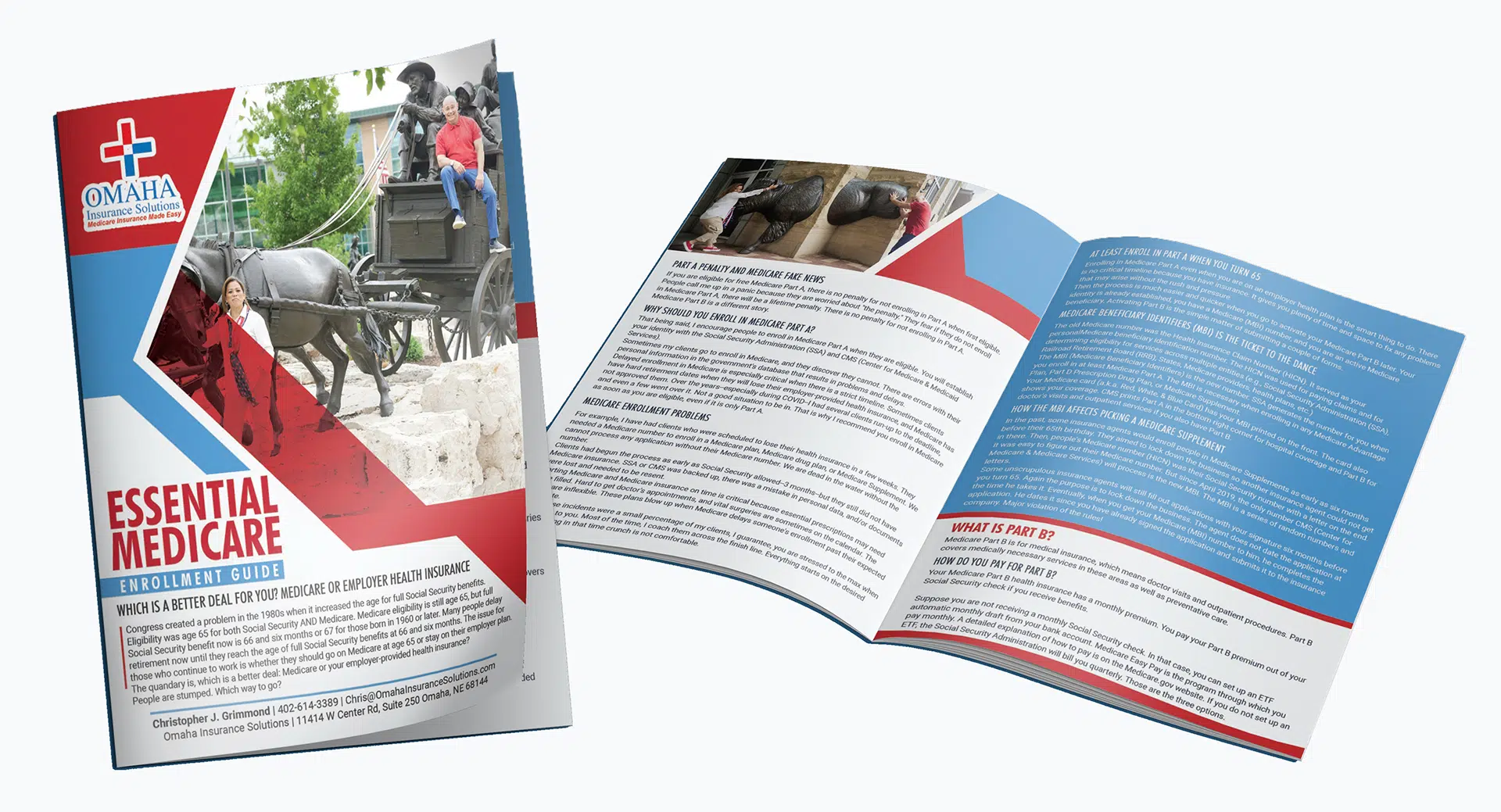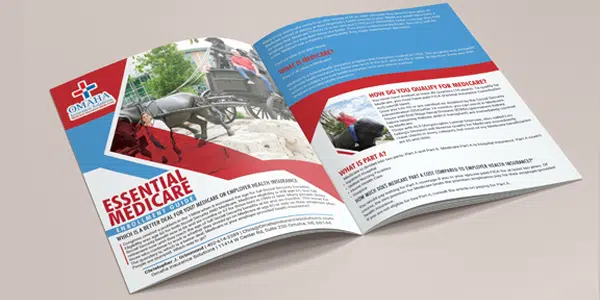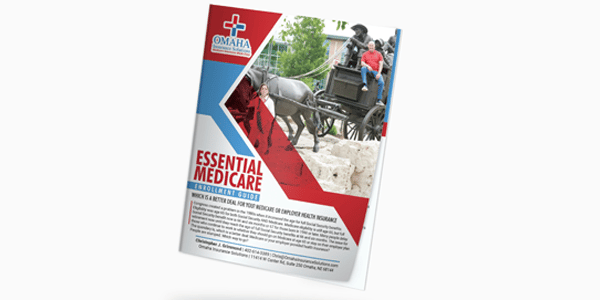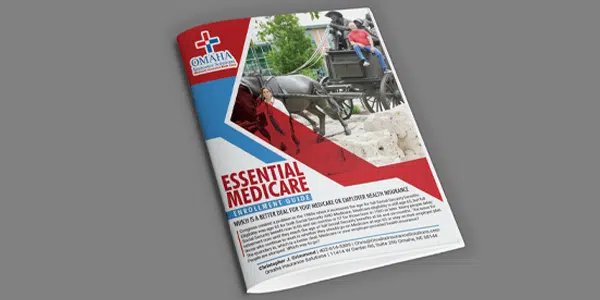Beginner’s Guide to Medicare Advantage

For as long as I have been educating people about Medicare, prospects are always surprised when I talk about Medicare Advantage insurance plans in Omaha, Nebraska. Even for those who have heard something about Medicare Advantage, people are astonished when I go into the details of the plans. So I’ve found people need a beginner’s guide to Medicare Advantage plans to put this “new” idea into context.
Is Medicare Advantage Better?
A beginner’s guide to Medicare Advantage programs needs to explain the tremendous interest in the plans.
The trustees for the Medicare Trust Fund recently issued their annual report. They surprised the public by announcing Medicare would go broke in 2026, three years earlier than projected. The demise of Medicare and the date of the end is an annual event. In light of the enormous spending budgets pushed through Congress recently, the natural question is why are we spending so much if Medicare is failing, especially as the enormous baby boomer population is filling up Medicare rolls at record rates.
Medicare Advantage has been a working solution to the rising cost of Medicare since the 1990s. Its size and importance on the Medicare landscape are growing significantly and will only expand even more.
What is Medicare Advantage?
Medicare Advantage is Medicare, but is Medicare administered by a private insurance company. The Center for Medicare & Medicaid Services (CMS) approves all Medicare Advantage plans. The private insurance company must meet specific and strict CMS criteria. Medicare Advantage plans must provide at least as much care, if not more, as regular Medicare.
The purpose of utilizing private insurance companies was to use the efficiency of the market and competition to reduce the overall medical burden for the taxpayer and improve the quality of healthcare. Ideally, the system strives to align with the incentives of the patient, insurer, provider, and government to deliver the highest quality care at the lowest cost. The plans, previously called Medicare Plus, received their modern name as part of the Medicare Modernization Act of 2003. Medicare Advantage accounted for 35% of Medicare members at the end of 2017.
According to healthcare consulting firm LEK, the program will grow to around 45-55% of Medicare enrollees by 2025. As a result, Medicare Advantage enrollment presents a significant business opportunity for insurers and other partner healthcare players, such as home care agencies and physician groups, to serve the older population.
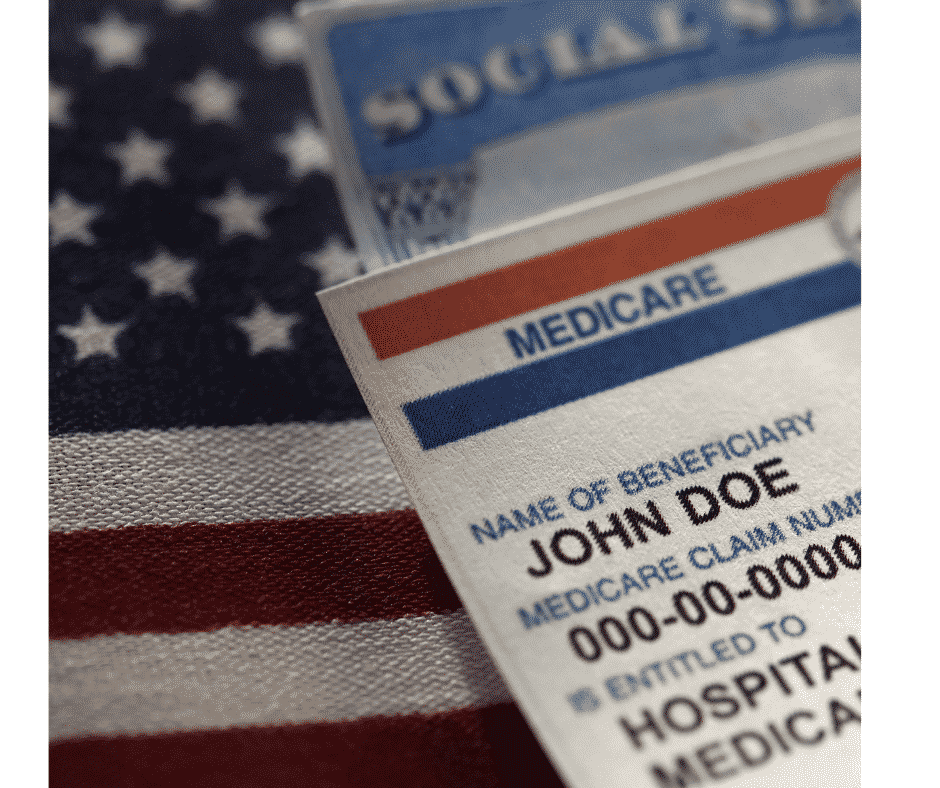 Is Medicare Advantage A Good Deal?
Is Medicare Advantage A Good Deal?
CMS (Center for Medicare & Medicaid Services) and Social Security Administration(SSA) try to function like insurance companies collecting premiums and paying claims based on actuarial calculations of cost and risk. The record of fraud, waste, and abuse Medicare has suffered over the years forced Congress to look outside for other alternatives, such as privatization. The government currently pays insurers between about $10,000 and $14,000 a year for each Medicare Advantage member. That differs from traditional Medicare, in which the government pays providers directly. It is hard to get a similar number for Original Medicare because of the enormous cost of the CMS bureaucracy.
The Centers for Medicare and Medicaid Services (CMS) project Medicare enrollment to grow from 59.3M in 2018 to 72M in 2025. This projection works out to a $360B to $468B market share in 2025 before accounting for growth in payments (rates have increased more than 3% in each of the last two years). Medicare Advantage is vital in combating the growing cost of healthcare that is beginning supercharged by recent inflationary concerns.
The first point in the beginner’s guide to Medicare Advantage programs is MA plans reduce overall costs to Medicare and the taxpayer.
 How Does A Medicare Advantage Plan Work?
How Does A Medicare Advantage Plan Work?
With something relatively new like Medicare Advantage, people want to understand how it works. A beginner’s guide to Medicare Advantage plans must address the simple question: how does it work?
In 1964, Medicare created the Trust Fund to fund Part A, Hospital Insurance (HI). The Congressional Budget Office estimates the expenditures for HI currently will outpace revenue by 2026. The present payroll tax for Medicare of 1.45% / 2.9% is insufficient to meet expenditures.
Medicare Advantage has grown in popularity among legislators and consumers because it lowers costs for patients while providing members with additional benefits.
Who Pays For Medicare Advantage?
Medicare Advantage insurance plans in Omaha, Nebraska, and throughout the country are different than traditional Medicare plans. Traditional Medicare (“Original Medicare” is the official name) is the oldest type of insurance payment–“fee-for-service” (FFS). With FFS Medicare, CMS (Center for Medicare & Medicaid Services) pays a fee for each procedure or service. In Medicare Advantage, CMS pays insurers one monthly sum per member to manage all healthcare expenses. The plan must cover at least all that Medicare covers and provide care as determined by CMS guidelines. The monthly plan payment is called a “capitation.”
How Does An Advantage Plan Work with Medicare?
A beginner’s guide to Medicare Advantage programs must nail the critical difference of how it works from Original Medicare. ‘Follow the money!’
The Capitation Model under CMS is a three-way contract between the insurance company, the state, and CMS for Medicaid plans to provide comprehensive, coordinated care. In the capitated model, CMS and the state will pay each health plan a prospective capitation payment. CMS is collecting a variety of measures that examine plan performance and the quality of care provided to enrollees. This data goes into how much, or little CMS pays each plan. Coordination with the state is essential for the duel-type plans that coordinate between Medicare and Medicaid Plans (MMP).
With Medicare Advantage, the patient-Driven Payment Model (PDPM) aligns incentives for seniors, insurers providers, and the government.
-
Seniors get extra benefits and an insurer is motivated to keep patients healthy and at a low cost.
-
Insurers get an ample profit opportunity – managing the complex care of seniors. Medicare Advantage plans had 25% higher profit margins than traditional insurance in 2016.
-
The government can push the management of many seniors to the private sector, reducing the massive Medicare bureaucracy cost.
What Is the Difference Between Regular Medicare and Medicare Advantage?
Both Medicare Advantage and traditional Medicare (Original Medicare) pay for healthcare for seniors and others eligible for Medicare, but they work differently. Medicare Advantage combines health insurance, prescription drug coverage, and additional benefits, like dental, vision, and hearing, into one plan with one medical card. Original Medicare stands alone and provides coverage under the red, white, and blue Medicare card. Original Medicare may be combined with a Medigap policy. The Medigap policy from the private insurance company fills in the Part A deductible and unlimited Part B coinsurance gaps for an additional premium. The Medigap policy is a separate card.
In addition, the consumer must purchase a separate stand-alone Part D prescription drug plan from another private insurance company. If they want additional benefits, such as dental, vision, and hearing, they must purchase another policy from another insurance company. Thus three insurance companies plus Medicare insurance for a total of four separate premiums coming out of your bank account as well as four cards to carry. A Medicare Advantage insurance plan in Omaha, Nebraska is one card and one point of contact for everything with no premium or meager premium aside from the Medicare Part B premium drafted out of your Social Security check.
 Only with Medicare Advantage
Only with Medicare Advantage
Some Medicare Advantage plans’ designs cater to beneficiaries with special needs, like diabetes, COPD, and coronary issues. These consumers’ situations need special care to mitigate against further decline. Original Medicare does not offer these types of specialty programs–Medicare Advantage does.
The most significant advantage of Medicare Advantage enrollment compared to Original Medicare is the Maximum Out-of-Pocket (MOOP) for each plan. The MOOP for 2022 is $7,550 in-network and $11,300 out of network, but in many areas, such as the Omaha Metro Area, most of the MA plans have much lower MOOP’s. Original Medicare does not have a MOOP. There is no limit on the number of times Medicare may access a Part A deductible, and there is no maximum out of pocket for the Part B coinsurance. It is an unlimited 20% coinsurance. That is why people pay the additional premium for Medigap policies.
Different Kinds of Plans
Medicare Advantage plans come in different network structures–HMO, PPO, PFFS. Insurance companies develop networks with doctors and hospitals to reduce costs and increase the quality of outcomes. In the HMO (Health Management Organizations), the insurance company signs a contract with the doctor or healthcare institution to provide healthcare in the manner dictated by CMS’s Patient-Driven Payment Model (PDPM) and according to the insurance company’s pay structure. The insurance company provides clients for the providers, and providers offer their services at a reduced cost. The focus is on quality of outcome versus quantity, such as with the FFS Original Medicare model.
Original fee-for-service Medicare does not have this structure. CMS determines the fee structure for doctors and hospitals. CMS pays them directly. If a doctor or hospital does not wish to participate in the Medicare system, they do not accept their patient’s Medicare card. The more services provided, the more Medicare pays the hospitals and doctors. The focus is on quantity rather than quality.
Medicare Advantage Insurance Plans in Omaha, Nebraska
In the Omaha Metro Area, we are blessed with three excellent networks: Catholic Health Initiative (CHI), Nebraska Medicine, & Methodist. They work with the area Medicare Advantage plans, so all of their doctors and facilities are included within the plans’ networks.
Some plans are PPO (Preferred Provider Organizations) plans, meaning those plans work with doctors outside the prescribed network; however, the doctor or institution must still accept Medicare for service to be rendered. The cost maybe more, but the MA plan will work with those physicians and institutions to reimburse them for services according to Medicare’s assignment of fees. A beginner’s guide to Medicare Advantage plans needs to layout these mechanics.
What Does Utilization Management Have To Do with Medicare?
The most significant difference between Medicare Advantage and Original Medicare is MA’s use of “utilization management.” MA plans require prior approval for a large number of procedures, especially those that are costly. The insurance company determines based upon the information the doctor provides whether the recommended treatment is the most cost-efficient to achieve the desired outcome. These decisions are made based on CMS guidelines for care.
Utilization management (UM) is the method used by most health plans already. The employer health plan would give the green light for a procedure during your working years or recommend a less costly and/or intrusive procedure. Insurance companies use the same method in Medicare plans now to prevent waste and abuse of resources.
UM is a set of techniques used by insurance companies to manage health care costs by influencing provider and patient care decision-making through case-by-case assessments of the appropriateness of care. The change is because, in a predominantly fee-for-service payment system, the motivator is to increase the number of procedures resulting in unnecessary and inefficient care provided to patients. The UM systems can reduce waste and abuse, and the cost of operating UM systems is small compared to overall savings, which research suggests is between 10-30%.
 How Do Medicare Advantage Plans Make Money?
How Do Medicare Advantage Plans Make Money?
CMS pays an insurance company with a Medicare Advantage contract a Per-Member-Per-Month (PMPM) dollar amount to provide care that meets CMS’s standard for a Medicare plan. Per-Member-Per-Month forms the basis upon which managed care organizations pay providers under capitation revenue stream or cost for each enrolled member each month. PMPM payments vary based on important factors, such as location, member health, and quality bonuses.
CMS assigns a benchmark rate to each county to account for differences in costs of care. For example, New York City has a higher benchmark rate than Biloxi, Mississippi.
Next, plans calculate a “risk score” for each member based on their health status. The less healthy an enrollee is, the higher their risk score will be.
What Is CMS Hierarchical Conditional Category System?
There are many different models for medical risk adjustment within the healthcare system. The Centers for Medicare & Medicaid Service (CMS) risk adjustment model uses the Hierarchical Condition Category (HCC) method to calculate risk scores for Medicare Advantage enrollment patients. The hierarchical condition categories list relates medical diagnoses into groupings based on resource use. Higher category risk scores represent higher anticipated healthcare costs. For example, diabetes diagnoses, including complications, have a higher risk score and greater anticipated Medicare risk and healthcare costs than diabetes without complications. The persons are assigned hierarchical condition codes that are tracked.
Medicare Billing Expansion
HCCs are a grouping of clinically related diagnoses with similar associated costs to the healthcare system. Only those International Classification of Disease (ICD) codes that map to an HCC category are used in the risk adjustment processing system. Not every diagnosis is “risk adjusting” or mapped to an HCC in the Medicare risk adjustment model. Some illnesses and injuries may not be predictive of ongoing expenses. Still, severe acute diseases and injuries or chronic conditions such as diabetes, heart failure, and chronic obstructive pulmonary disease may pose a continuing financial burden to the healthcare system. As a result, the number of billing codes has exploded exponentially.
Administration Is The Burden of Medicare Advantage
All risk adjustment models rely on comprehensive healthcare analytics and evidence-based reporting of patient care. CMS requires that a qualified healthcare provider describe all chronic conditions and severe diagnoses for every patient every year to establish a health profile. Documentation in the medical record content must indicate the provider’s plan for patient help or Management, Evaluation, Assessment, or Treatment (MEAT) of the condition. The plan then predicts health costs using the HCC risk adjustment coding for the subsequent contract year. Inaccurate or non-specific diagnoses can impact patient care, outcomes, and reimbursement payment for the ongoing care of that patient. The systems are so complex the customer experience of healthcare is significantly diminished.
The CMS HCC risk adjustment model assigns a risk score, also called the Risk Adjustment Factor (RAF) to each eligible Medicare Advantage (MA) enrollment beneficiary. A beneficiary’s Medicare RAF is based on the beneficiaries’ health conditions and demographic factors such as Medicaid and disability status, gender, age, and whether a beneficiary lives in the community or an institution, like a skilled nursing facility.
Higher risk scores, or RAF, represent more significant than average disease burden patients. Lower risk scores represent a healthier population view but may also falsely indicate a healthy population with poor chart documentation or incomplete Medicare risk adjustment coding.
 Risk Score Makes for Better Healthcare
Risk Score Makes for Better Healthcare
When using the Medicare risk adjustment factor system, each beneficiary is assigned a “risk score” according to the patient’s demographics, health status, and other clinical factors. The beneficiary’s risk score depicts the patient’s predicted health costs compared to an average beneficiary’s. The Medicare RAF is a relative measure of the predicted costs to meet the healthcare needs of the beneficiary.
Complexity Makes for Mistakes
Health plans collect payments for covered members from CMS. A risk adjustment factor system adjusts plan payments to ensure fair payment for providing healthcare services and benefits, sometimes known as population health management. A complex formula determines the payments that apply the Medicare risk adjustment factor terms to an average payment based on location. A complex formula determines the payments that apply the Medicare risk adjustment factor terms to an average payment based on location. In 2020 RAF Medicare scores increase based on the condition count (how many HCC conditions the patient has). Specific disease interaction algorithms may increase the risk score. There is also disease hierarchy logic that prevents inflated risk scores.
For example, the RAF healthcare score will not increase if you diagnose “breast cancer” and “metastatic breast cancer” in the same patient. The RAF healthcare score determines the hierarchy logic for the more severe illness – metastatic breast cancer “supersedes” breast cancer without metastasis. In this example, the Medicare RAF score of the patient related to breast cancer is calculated exclusively on the RAF score for metastatic breast cancer.
metastatic breast cancer “supersedes” breast cancer without metastasis. In this example, the Medicare RAF score of the patient related to breast cancer is calculated exclusively on the RAF score for metastatic breast cancer.
When I hear about insurance companies busted for overcharging, the error is usually tied to misclassification. While some may be for gain, others are mistakes or attempts by providers to get the maximum benefit for the sick client. Add into that the blizzard of codes, and it is a system ripe for errors.
 Excessive Government Regulation Hurts Plans
Excessive Government Regulation Hurts Plans
Medicare and Medicaid risk adjustments modify capitated payments for beneficiaries enrolled in health plans. CMS policy requires that a qualified healthcare provider identify all conditions that may fall within an HCC at least once each calendar year. Many providers feel this requirement is a time-consuming clerical burden on resources! It is challenging to look through the complete medical record each year to document and code every HCC related diagnosis. Healthcare organizations are beginning to adopt CMS risk adjustment software to help search and capture all the appropriate conditions of each patient in their population to reduce the burden on physicians and coders. By using computer-assisted coding that can synthesize the medical record and quickly associate evidence for HCC related diseases, it helps CMS match insurance payment accurately to the resource requirements of a Medicare Advantage population.
What Is the 5 Star Medicare Advantage System?
CMS rates Medicare Advantage with prescription drug coverage (MA-PD) contracts on up to 45 unique quality and performance measures; CMS rates MA-only contracts (without prescription drug coverage) on up to 33 measures, and stand-alone PDP contracts on up to 14 measures. Each year, CMS conducts a comprehensive review of the measures that make up the Star Ratings by assessing the reliability of the data, clinical recommendations, and feedback received from stakeholders.
Plans can also receive bonus payments based on “Star” ratings given to them by CMS. Star ratings are on a 5-star scale, based on a comprehensive 45 area evaluation, including member health achievement and client satisfaction. Plans with 4 or more stars receive a 5% Quality Bonus Payment (QBP). Small plans and new plans that have existed for less than 3 years receive a 3.5% QBP. Multiplying the benchmark rate, average risk score for patients in a plan, and QBP rate determines the PMPM rate.
Why Is Medicare Advantage Growing So Fast Among Insurance Companies?
The baby boomer population continues to grow, and more insurance companies are developing MA plans to enter the market. They are developing better technology and models of payment and care reducing care overhead costs and barriers to entry for more insurance companies. Building a Medicare Advantage enrollment plan is a costly and challenging process, as you have read; however, more companies are entering because barriers are falling and profit margins are still growing. As more companies enter the market, more competition reduces costs and improves the quality of the services.
Why is Medicare Advantage Growing So Fast Among Consumers?
Medicare Advantage programs are local plans based upon the capitation model of payment, so they require a large population to scale and be profitable. As the plans grow, the networks expand, and technology enables more efficient use of resources, more and more plans are coming online with richer and richer benefits.
Further, an increasing proportion of the Medicare population is choosing Medicare Advantage enrollment. Thirty-four percent of Medicare recipients were on Medicare Advantage in 2018, up from 31% in 2014. According to consulting firm LEK, this number is projected to reach 60-70% between 2030 and 2040 eventually.
In the decade that I have offered Medicare Advantage plans in Omaha, Nebraska, I have seen the quality of the plans in the Omaha area increase significantly. People coming off employer plans are more accustomed to paying a larger share of the cost than previous new beneficiaries to Medicare. More and more people are coming off of high-deductible plans. The minimal copays and maximum out-of-pocket of most Medicare Advantage plans today seem small compared to former employer plans.
 A Beginner’s Guide to Medicare Advantage Is A Beginning
A Beginner’s Guide to Medicare Advantage Is A Beginning
I wrote this beginner’s guide to Medicare Advantage insurance plans in Omaha, Nebraska to help you understand how Medicare Advantage works in relation to Original Medicare. There is a large amount of misinformation about it. Insurance agents, agencies, and companies that only sell Medicare Supplements or Medigap plans muddy the waters by telling half-truths, exaggerating numbers, presenting misleading information, and excluding essential facts. Consumers, however, faced with hard economic and healthcare choices recognize the value being presented and are choosing Medicare Advantage plans more each year.
and are choosing Medicare Advantage plans more each year.
There is much more to know.




